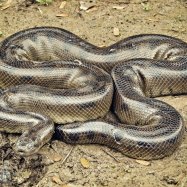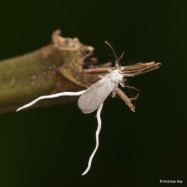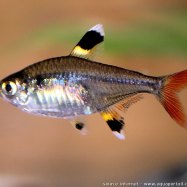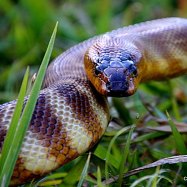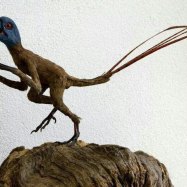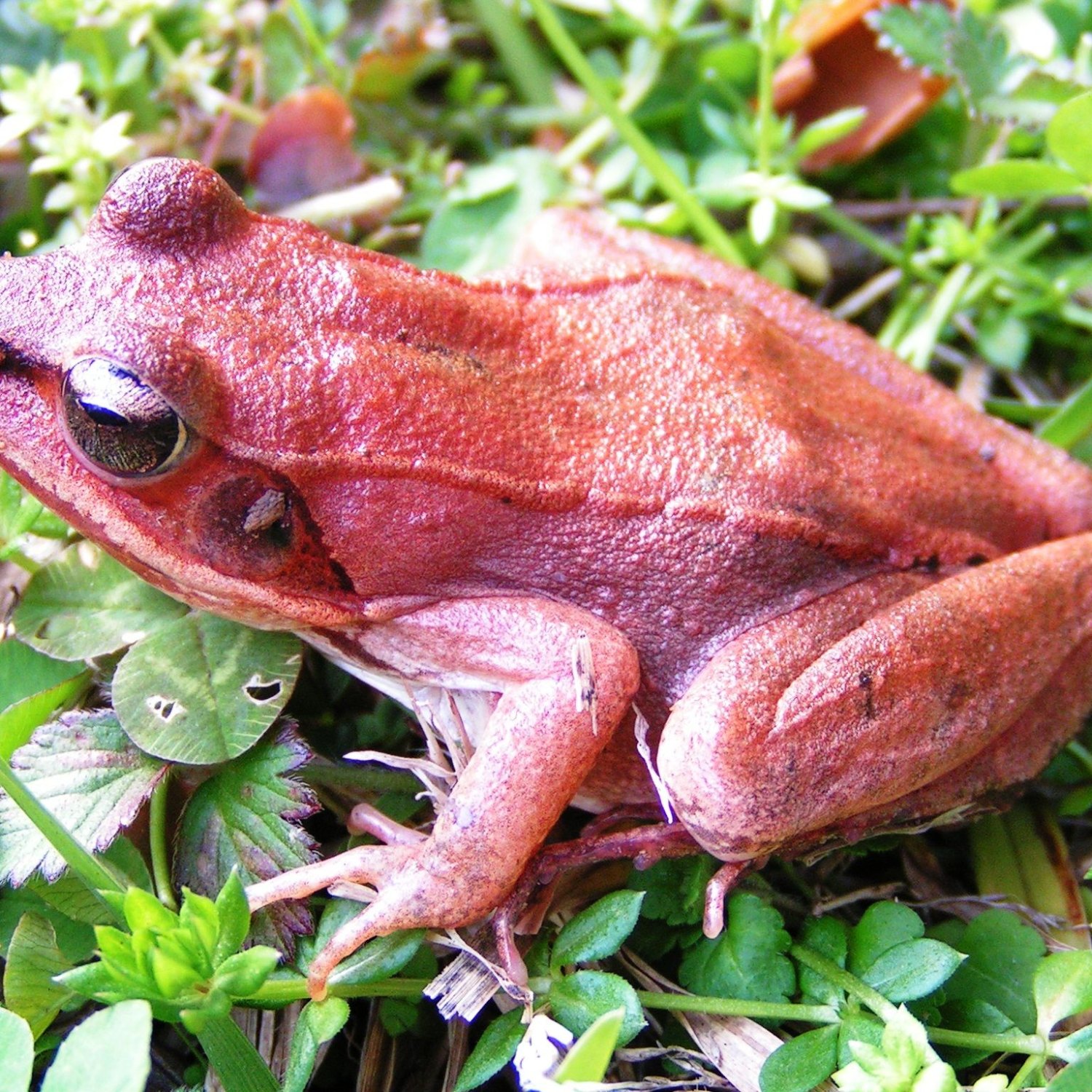
Wood Frog
2-3 inches (5-7.5 cm)
The Wood Frog, found in eastern and northern parts of North America, is a small to medium-sized frog with a stocky body. It is about 2-3 inches in length and belongs to the family Ranidae. This hardy amphibian has the unique ability to freeze solid during the winter and survive. #WoodFrog #Amphibians #NorthAmerica
Animal Details Summary:
Common Name: Wood Frog
Kingdom: Animalia
Habitat: Woodlands, forests, swamps
The Hardy and Versatile Wood Frog of North America
When it comes to survival in harsh and changing environments, few animals can match the resilience of the Wood Frog (Lithobates sylvaticus). This small amphibian, also known simply as the Wood Frog, is native to the eastern and northern parts of North America and has gained a reputation for its incredible adaptability and unique survival techniques.A Brief Introduction to the Wood Frog
The Wood Frog is a member of the Animalia kingdom and the Chordata phylum, making it a close relative to other amphibians like toads, salamanders, and newts. It belongs to the Anura order, which includes all frogs and toads, and the Ranidae family, which includes true frogs and wood frogs Wood Frog.As its name suggests, the Wood Frog is commonly found in woodlands, forests, and swamps throughout North America. It is a small to medium-sized amphibian, usually measuring between 2-3 inches (5-7.5 cm) in length. However, what truly sets the Wood Frog apart is its unique abilities to adapt and survive in unforgiving environments.
Survival in the Harsh North American Climate
The Wood Frog's habitat is primarily found in the northern and eastern regions of North America, including the United States and Canada. This encompasses a large range of climates, from cold boreal forests to hot and humid southern regions. To survive in these changing and challenging environments, the Wood Frog has developed some impressive survival techniques.One of the most notable adaptations of the Wood Frog is its ability to withstand freezing temperatures. As the temperature drops in the fall and winter, the Wood Frog takes on additional glucose and urea, effectively converting these substances into antifreeze in its body Western Blind Snake. This allows the frog to survive being frozen solid, with its heart and brain ceasing to function until the temperature rises again in the spring.
The Wood Frog also has a unique method of hibernating, known as "freeze tolerance." Instead of spending the winter in a dormant state like most animals, the Wood Frog goes into full hibernation and can tolerate temperatures as low as -8°F (-22°C). This allows it to survive in areas where other amphibians and reptiles cannot, making it one of the toughest creatures in the animal kingdom.
A Carnivorous Diet for a Hardy Frog
In addition to its remarkable adaptations for survival, the Wood Frog also has a unique feeding method. As a carnivore, it primarily eats insects, spiders, snails, and other small invertebrates. However, it has also been known to eat other frogs, as well as small mammals like mice and shrews.To hunt, the Wood Frog relies on its keen senses, including its excellent eyesight and sensitive hearing. It also has a long and sticky tongue that it can use to catch prey quickly. This unique combination of skills makes the Wood Frog a successful hunter and helps keep its population in check, contributing to the balance of ecosystems in its habitat.
Distinctive Features of the Wood Frog
The Wood Frog's physical appearance is quite distinct, making it easily recognizable in the animal kingdom. Its body shape is small to medium-sized, with a stocky and robust build. Its skin is usually brown or gray, with darker patches and a dark mask-like eye stripe that gives it a distinctive appearance.Another notable feature of the Wood Frog is its call, a distinctive "quacking” sound that the male often makes during mating season. This vocalization helps attract females and defend territories, contributing to the frog's overall success in reproduction.
The Wood Frog's Ecological Role
The Wood Frog plays an essential role in its habitat's ecosystem, serving as both predator and prey. As a predator, it helps control the populations of smaller animals, contributing to the balance of the food chain. As prey, it provides a source of food for larger animals such as snakes, birds, and mammals.Additionally, the Wood Frog's hibernation and freeze tolerance abilities make it a critical organism for scientists and researchers studying climate change and its effects on animal behavior. It serves as an excellent indicator of environmental health and can give insight into the changing conditions of its habitat.
The Wood Frog in Captivity
With its unique characteristics and abilities, the Wood Frog has become a popular choice among amphibian enthusiasts for keeping as pets. However, before deciding to bring a Wood Frog home, it is essential to understand that they require specialized care and a habitat that mimics their natural environment.Like all amphibians, Wood Frogs require a specific temperature and humidity range to thrive. They also need a water source in their enclosure, as they need to access water frequently to keep their skin moist and absorb oxygen. Providing them with a varied and balanced diet is also crucial for their well-being and longevity.
The Future of the Wood Frog
While the Wood Frog is not currently endangered, it does face environmental challenges like many other animals. Habitat loss, pollution, and climate change all pose potential threats to the Wood Frog's survival. However, its incredible adaptability gives hope for its continued resilience and success in the face of these challenges.The Wood Frog serves as a reminder of the incredible ability of animals to adapt and thrive in harsh and ever-changing environments. Its unique survival techniques, distinctive features, and ecological role make it a fascinating and essential member of the diverse animal kingdom. As we continue to learn more about the Wood Frog and its habitat, we can better understand and appreciate the delicate balance of nature and our role in preserving it.

Wood Frog
Animal Details Wood Frog - Scientific Name: Lithobates sylvaticus
- Category: Animals W
- Scientific Name: Lithobates sylvaticus
- Common Name: Wood Frog
- Kingdom: Animalia
- Phylum: Chordata
- Class: Amphibia
- Order: Anura
- Family: Ranidae
- Habitat: Woodlands, forests, swamps
- Feeding Method: Carnivorous
- Geographical Distribution: North America
- Country of Origin: United States and Canada
- Location: Eastern and northern parts of North America
- Animal Coloration: Varies, usually brown or gray with a dark mask-like eye stripe
- Body Shape: Small to medium-sized with a stocky body
- Length: 2-3 inches (5-7.5 cm)

Wood Frog
- Adult Size: 2-3 inches (5-7.5 cm)
- Average Lifespan: 3-7 years
- Reproduction: Sexual
- Reproductive Behavior: Breeding in vernal pools or temporary bodies of water
- Sound or Call: Males produce a duck-like call during breeding season
- Migration Pattern: May migrate short distances during breeding season
- Social Groups: Solitary
- Behavior: Active during the night and twilight
- Threats: Habitat destruction, pollution, climate change
- Conservation Status: Least Concern
- Impact on Ecosystem: Prey for a variety of predators
- Human Use: Not widely used by humans
- Distinctive Features: Freezing tolerance, ability to change color
- Interesting Facts: Can survive freezing and thawing
- Predator: Snakes, birds, mammals
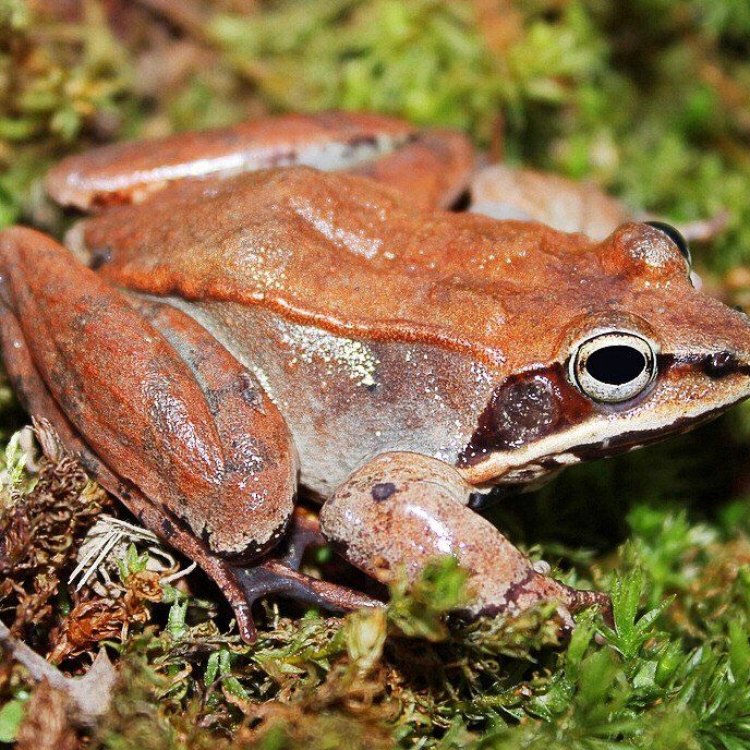
Lithobates sylvaticus
The Fascinating Wood Frog: Surviving in the Harshest Conditions
The natural world is full of fascinating creatures, each with their unique adaptations, behaviors, and survival mechanisms. Among these, the wood frog stands out as an incredibly resilient and adaptable species. Found in North America, this small amphibian has captured the attention of scientists and nature lovers alike with its ability to survive freezing temperatures, change color, and thrive in harsh environments. Let's take a closer look at this remarkable species and discover what makes it so special PeaceOfAnimals.Com.Meet the Wood Frog
The wood frog, also known as Rana sylvatica, is a small amphibian that can be found across North America, from the forests of Alaska to the woodlands of the eastern United States. It has a compact body, reaching an adult size of only 2-3 inches (5-7.5 cm) and is typically brown or reddish in color with dark markings. Despite its small size, it has a significant presence in the ecosystems it inhabits.Average Lifespan and Reproduction
The wood frog has an average lifespan of 3-7 years in the wild, with males typically living shorter lives than females due to the stress of breeding season. Speaking of breeding, wood frogs reproduce sexually, with individuals coming together in the spring to mate. This is a critical time for the species, and their unique reproductive behavior is closely tied to their survival.Breeding and Sound
One of the most interesting aspects of wood frog reproduction is their breeding behavior. Unlike many other species of frogs, they do not lay their eggs in permanent bodies of water like ponds or lakes Western Gorilla. Instead, they gather in temporary bodies of water, such as vernal pools or flooded areas, to lay their eggs. These pools only exist for a short period, making them the perfect environment for wood frogs to breed and raise their young.During this time, the males produce a unique sound or call to attract females for mating. Their call is often described as similar to a duck's quack, and it can be heard throughout the breeding season. These calls are essential for successful reproduction, and without them, the species would struggle to survive.
Migration Patterns and Behavior
The wood frog is a solitary and nocturnal creature, meaning it is most active during the night and twilight. However, during the breeding season, they may migrate short distances from their usual habitats to reach suitable breeding grounds. This migration pattern can be essential for their survival, as it allows them to find new breeding sites and avoid overcrowding in one area.Despite their small size, wood frogs are active and agile, often jumping and crawling through the forest floor at night. They are also excellent climbers and can often be found resting on tree branches or logs during the day.
Threats and Conservation Status
As with many other species, the wood frog faces several threats to its survival. Habitat destruction, pollution, and climate change are significant factors impacting their populations. Loss of suitable breeding habitats, such as vernal pools, can have severe consequences for the species, as well as the use of pesticides and chemicals in the environment.However, despite these threats, the wood frog currently has a conservation status of "Least Concern" on the IUCN Red List. This status is due to their wide distribution and relatively stable population. But it is crucial to continue monitoring and protecting their habitats to ensure their survival for future generations.
The Impact on Ecosystems
As a vital part of the ecosystem, wood frogs play a crucial role in the food chain. They are a prey species for a variety of predators, including snakes, birds, and mammals, making them an essential source of food for many animals. If their populations were to decline, it could have a ripple effect on other species' survival in the ecosystem.Human Use and Interesting Facts
The wood frog is not widely used by humans, and it is not a popular pet or a significant source of food. However, they are still a crucial species to study and observe in their natural habitats. Scientists continue to learn more about their unique abilities, such as their freezing tolerance, which has captivated people's interest for years.One of the most interesting and distinctive features of the wood frog is its ability to survive freezing and thawing. During the cold winter months, wood frogs will bury themselves under leaves, logs, and other debris, where they enter a state of hibernation. As their body temperature drops, ice crystals form in their organs and tissues, essentially freezing them.
But unlike other animals, such as fish, whose cells rupture when frozen, the wood frog's body produces a high concentration of glucose, acting as a natural antifreeze. This allows them to survive in this frozen state until the temperatures rise in the spring, and they thaw out. It is a remarkable adaptation that has enabled them to survive in harsh environments for millions of years.
Predators
Despite their incredible freezing ability, wood frogs are not completely immune to predators. Snakes, birds, and mammals are all common predators of the species, and they must remain vigilant to survive. However, their ability to blend in and change color can provide some protection from predators.A True Survivor
In conclusion, the wood frog is an incredibly fascinating and resilient species, with several unique features and abilities that enable them to thrive in the harshest conditions. From their freezing tolerance and ability to change color to their breeding behavior and migration patterns, every aspect of this small amphibian is a testament to its survival instincts.However, they are not invincible, and it is our responsibility to protect and preserve their habitats for future generations. With the continued efforts of conservationists and individuals alike, we can ensure that the wood frog continues to thrive in the natural world and inspire us with its remarkable adaptability.
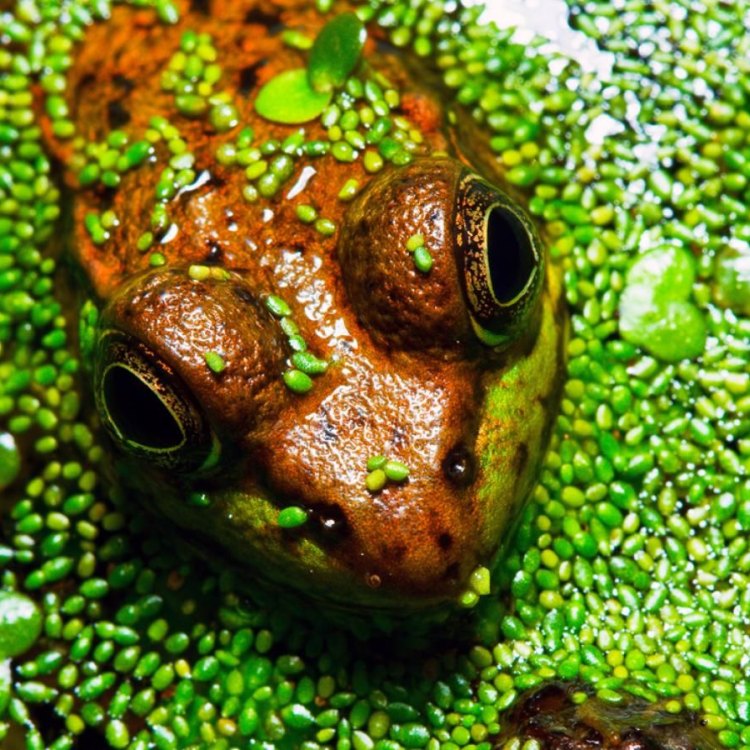
The Hardy and Versatile Wood Frog of North America
Disclaimer: The content provided is for informational purposes only. We cannot guarantee the accuracy of the information on this page 100%. All information provided here may change without prior notice.



